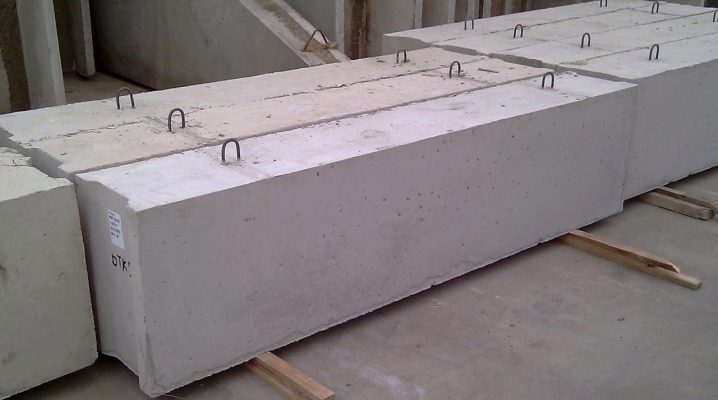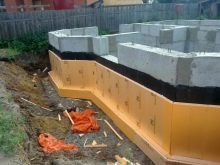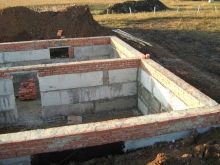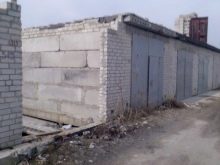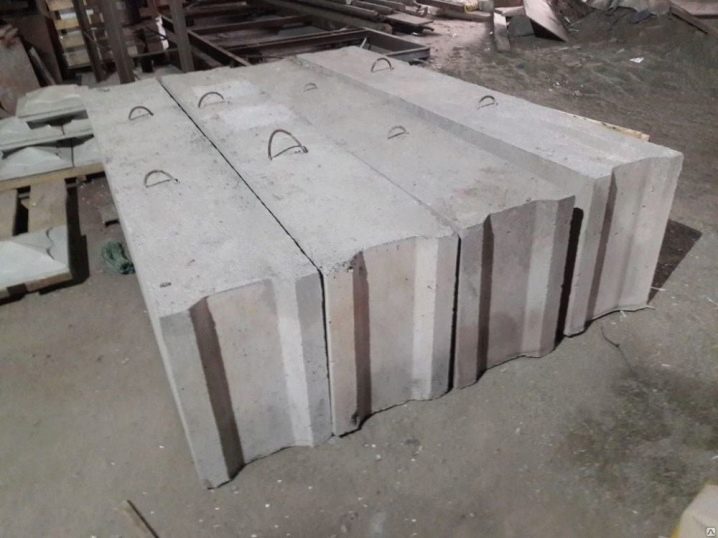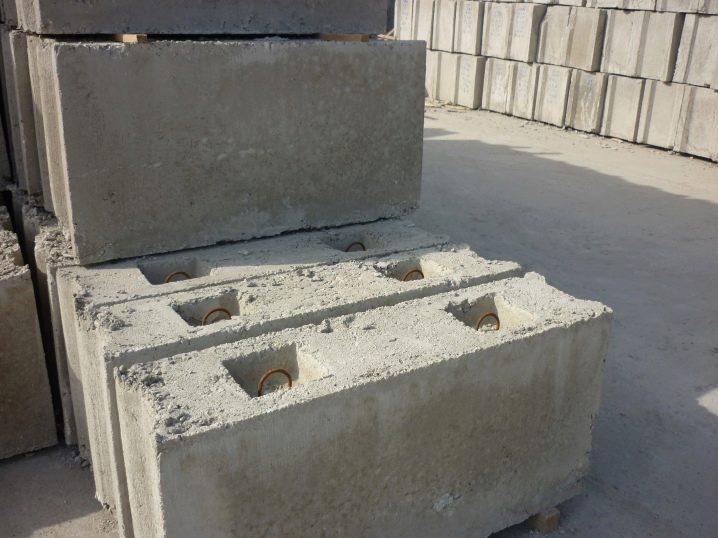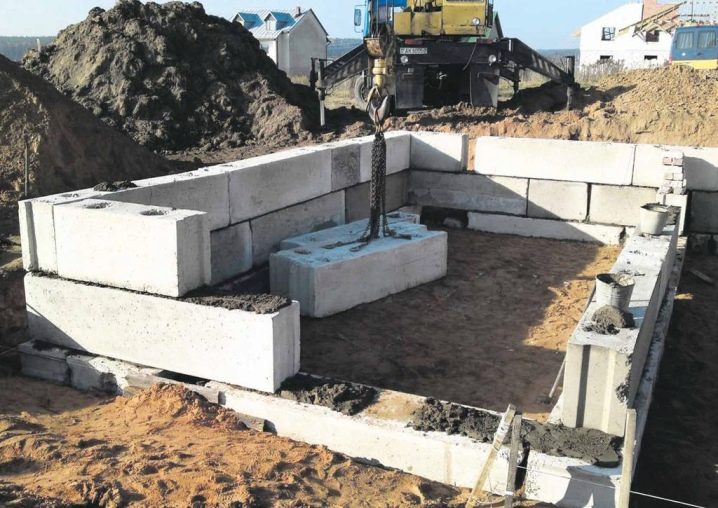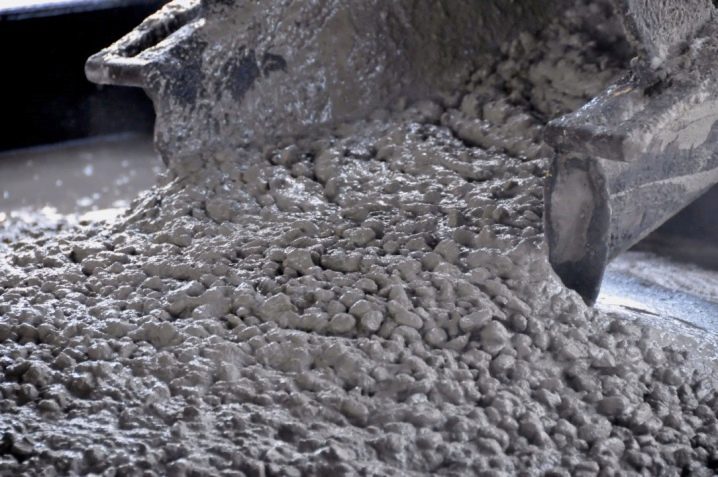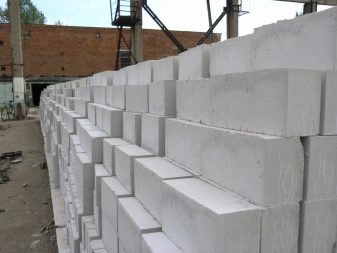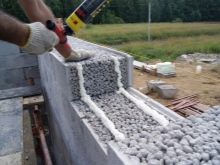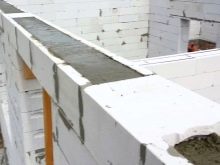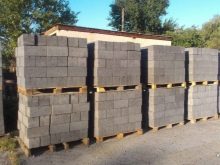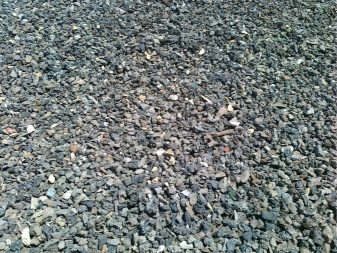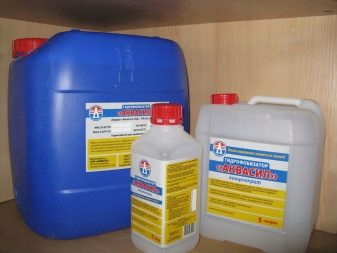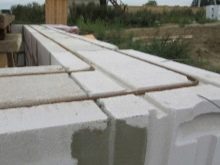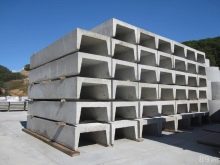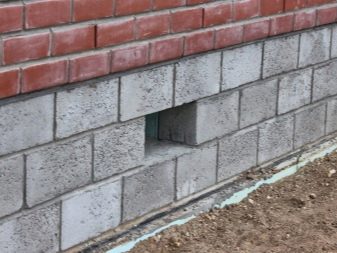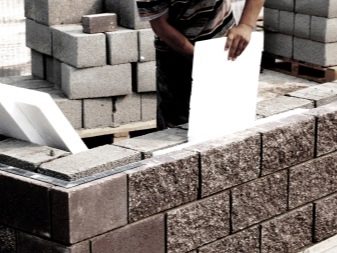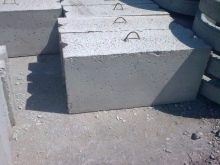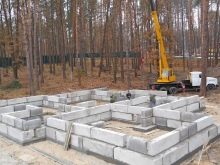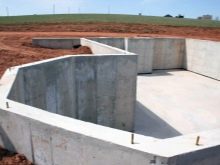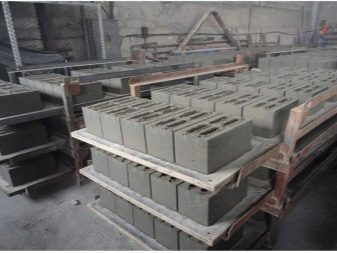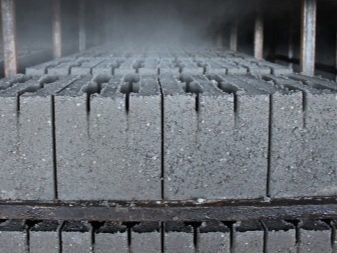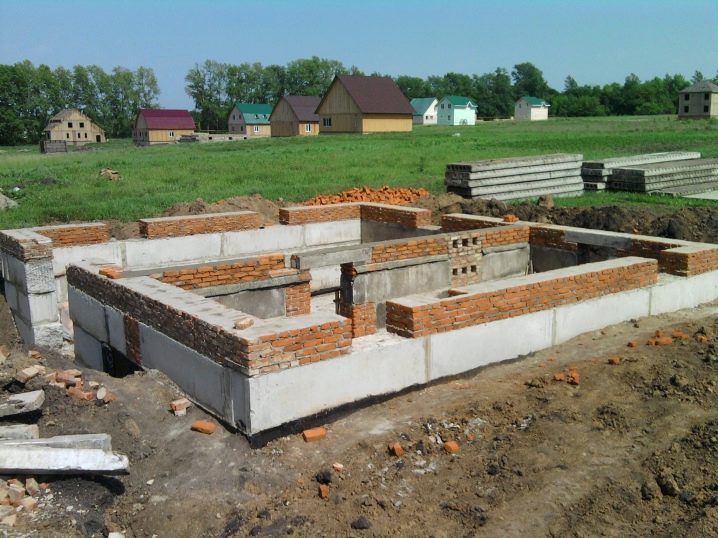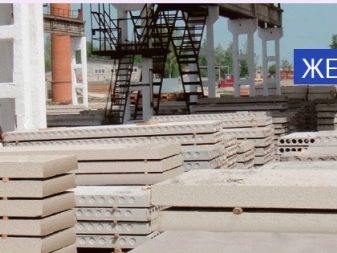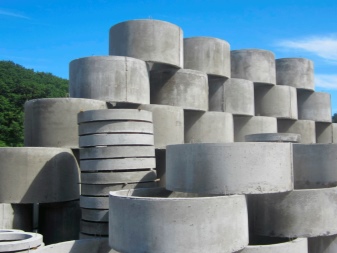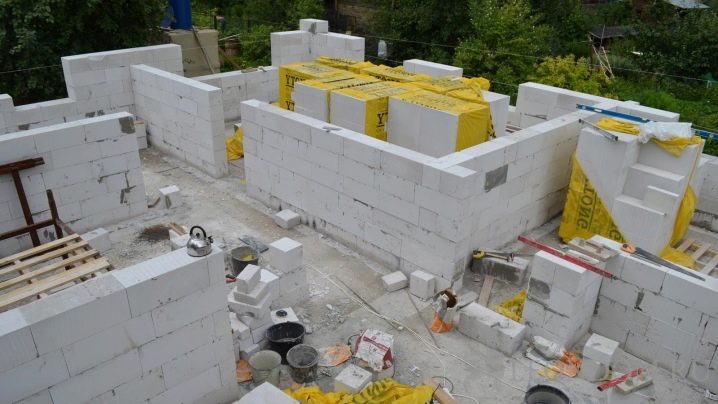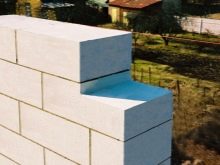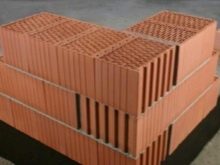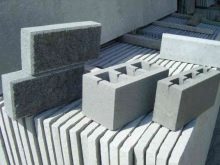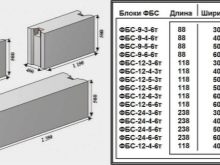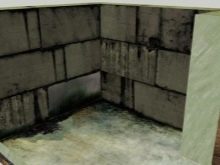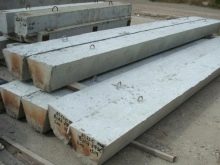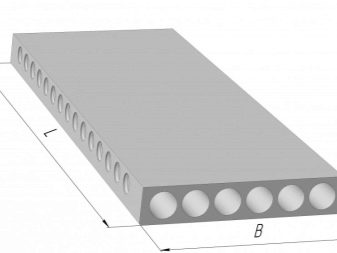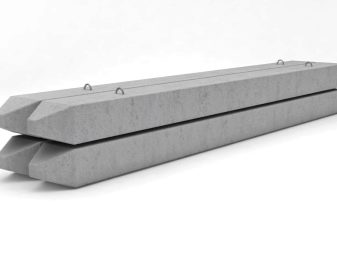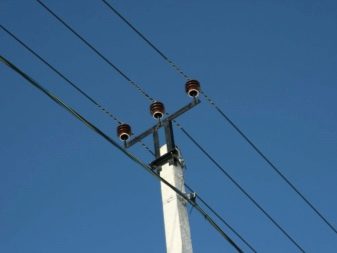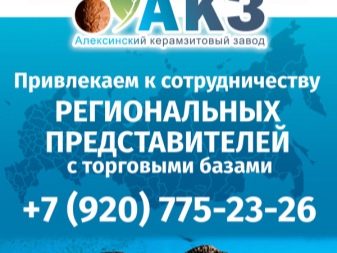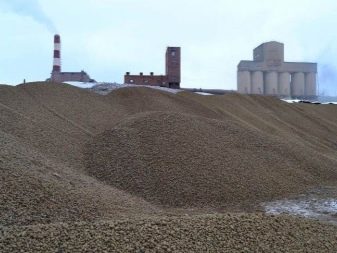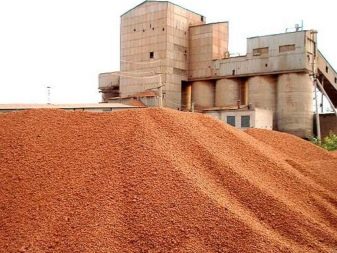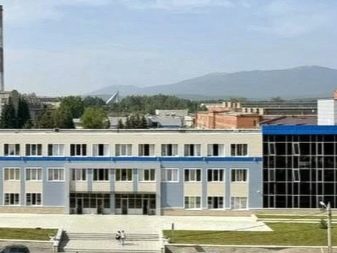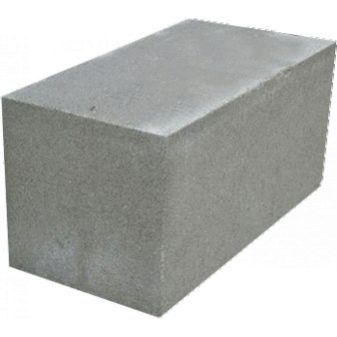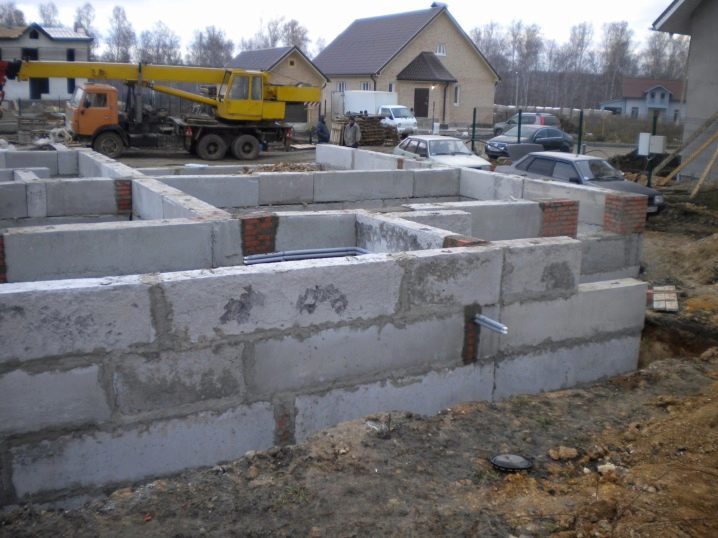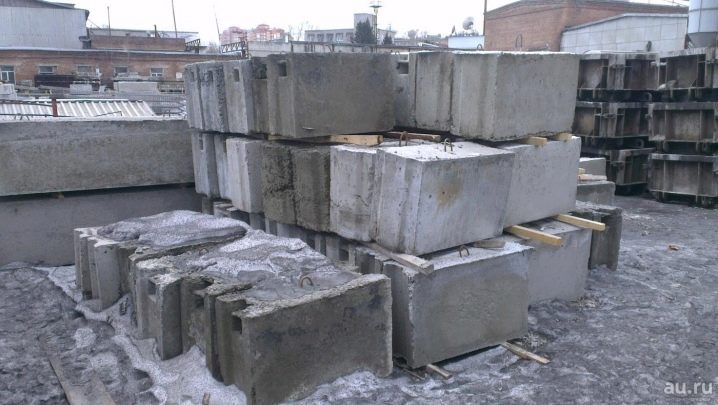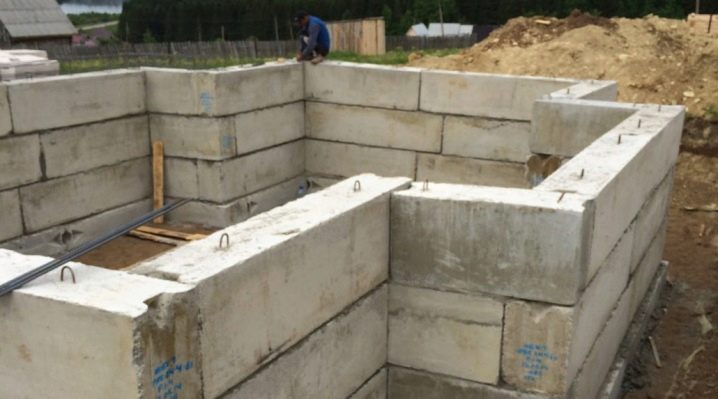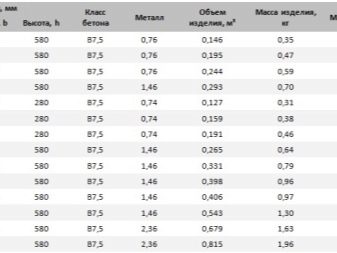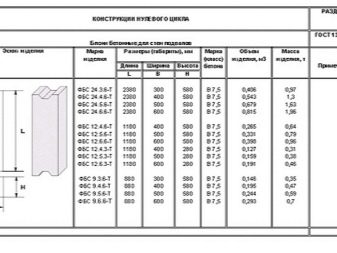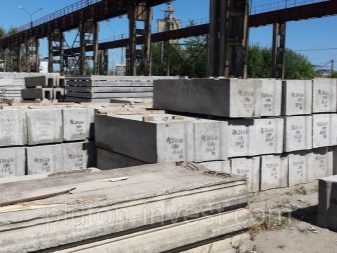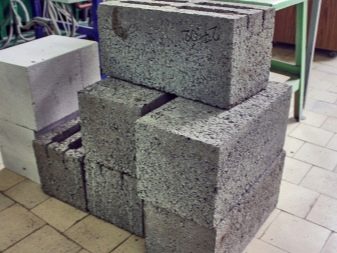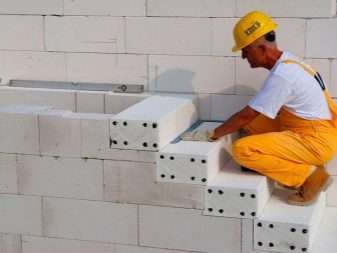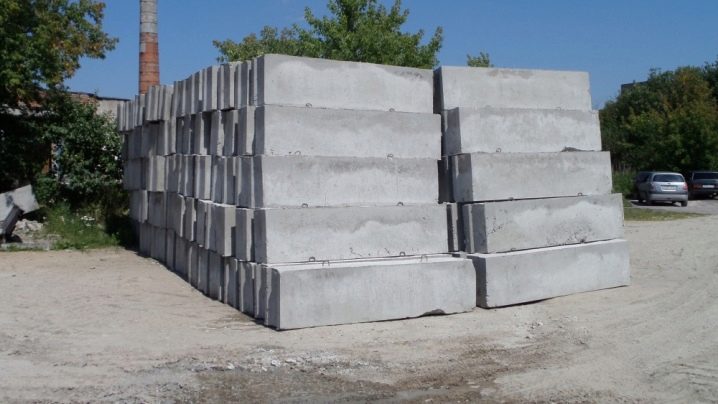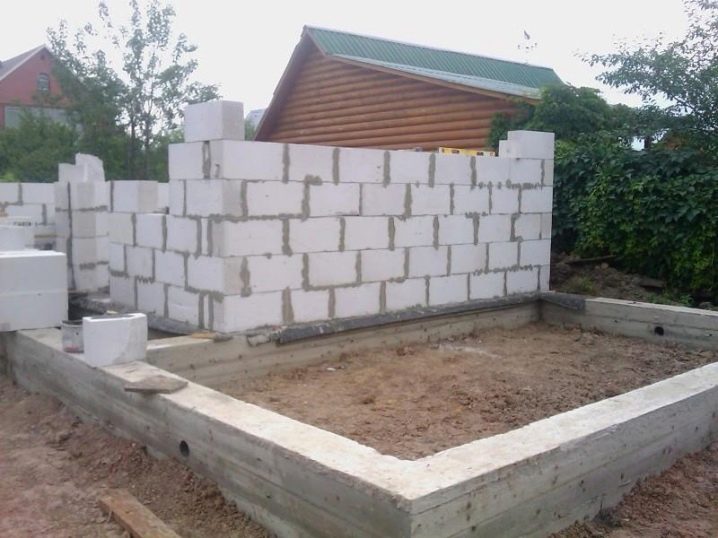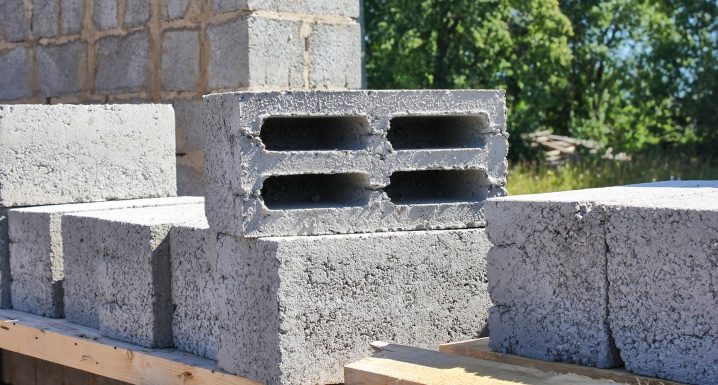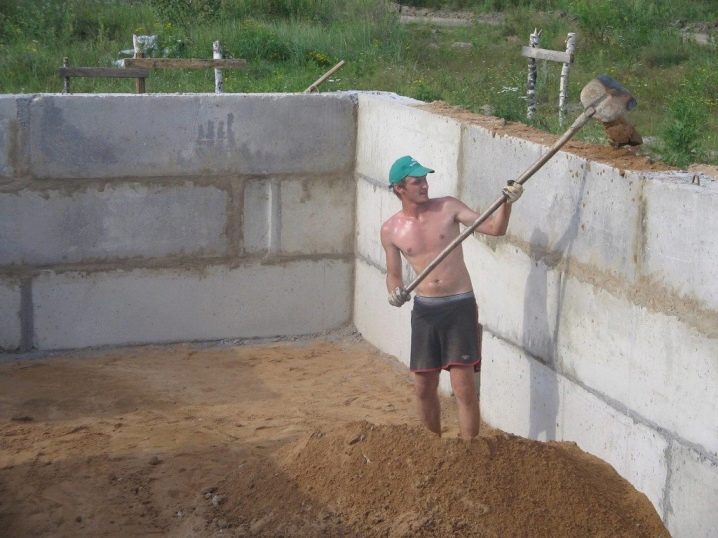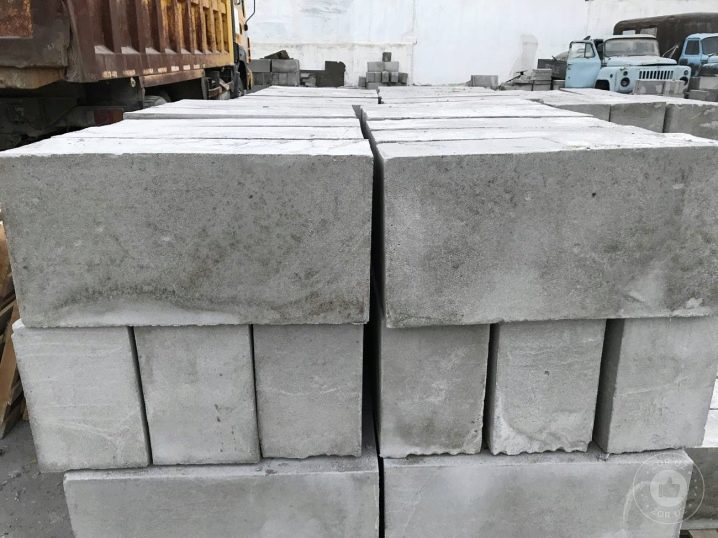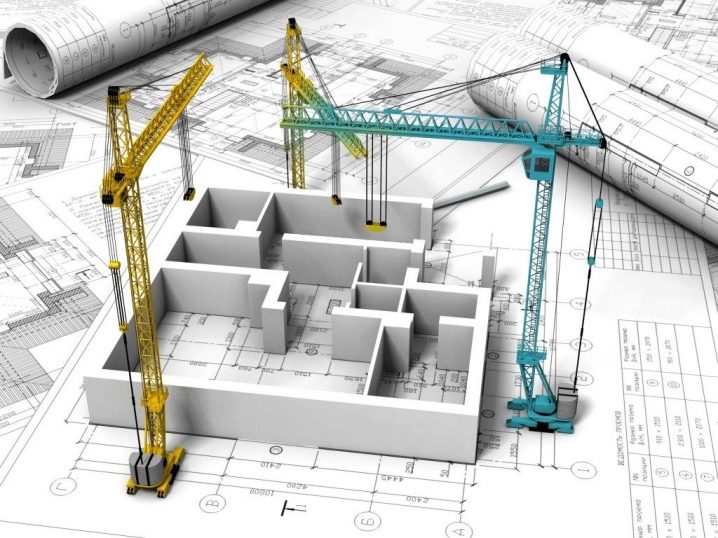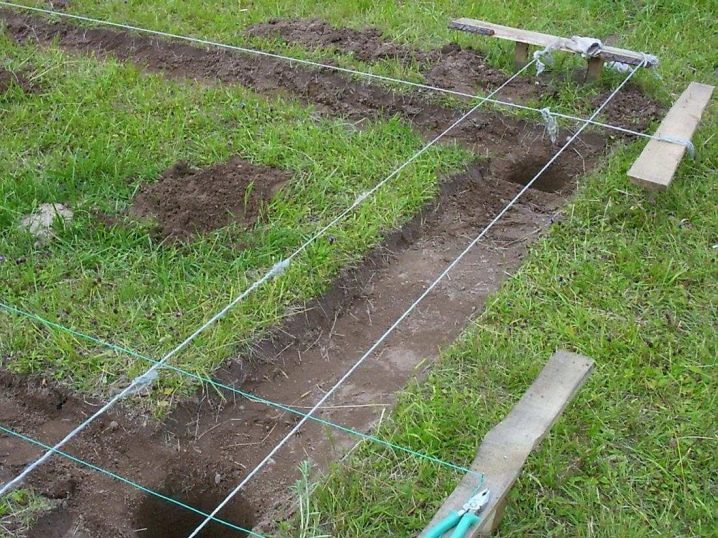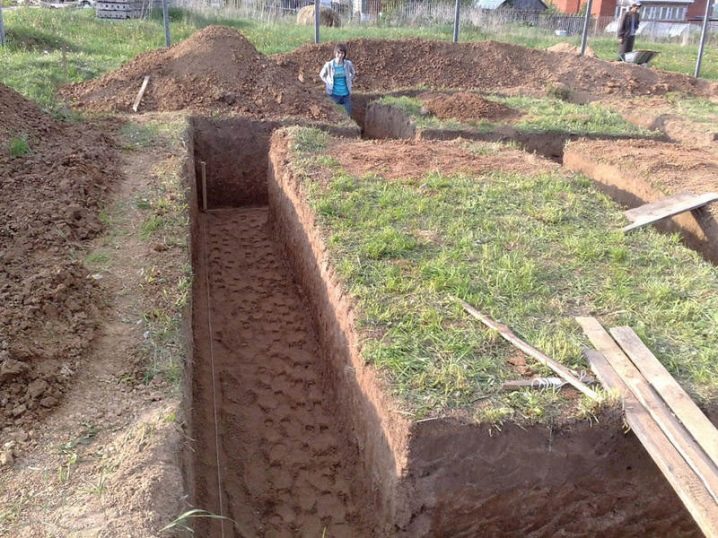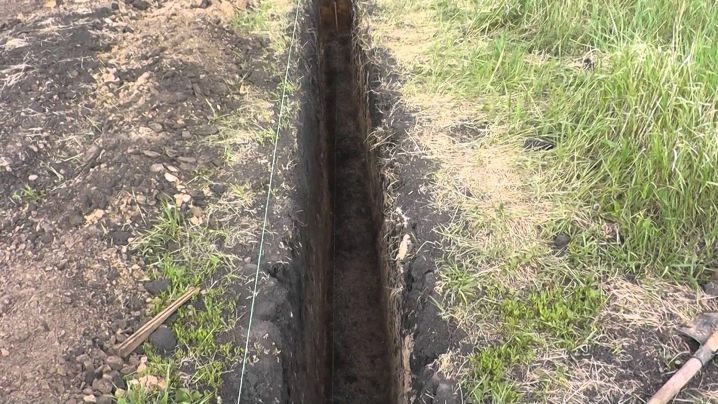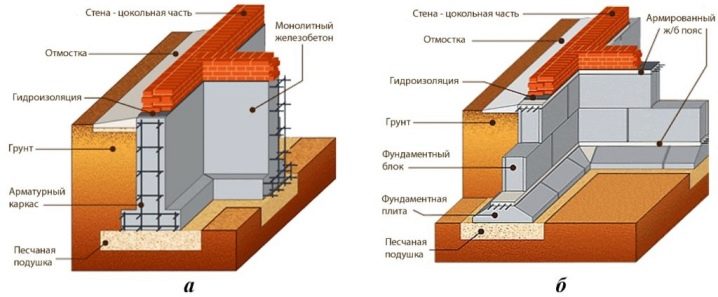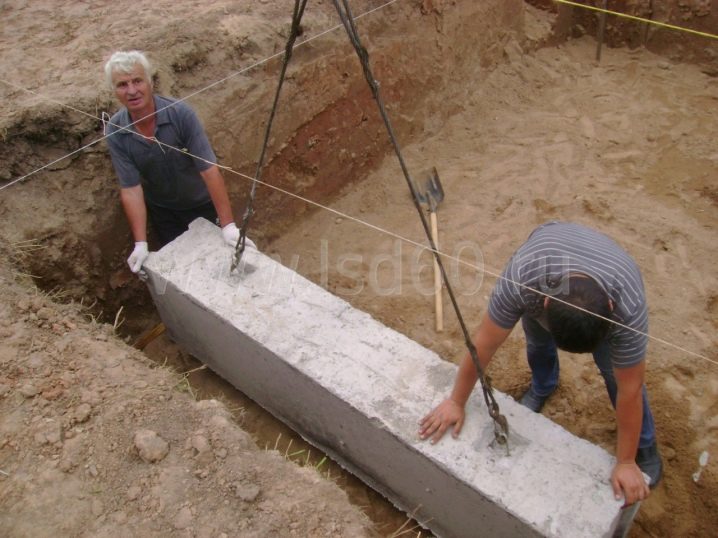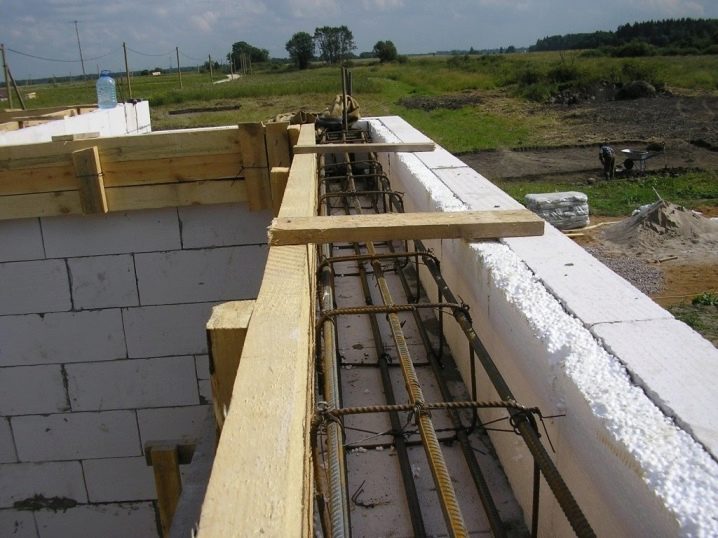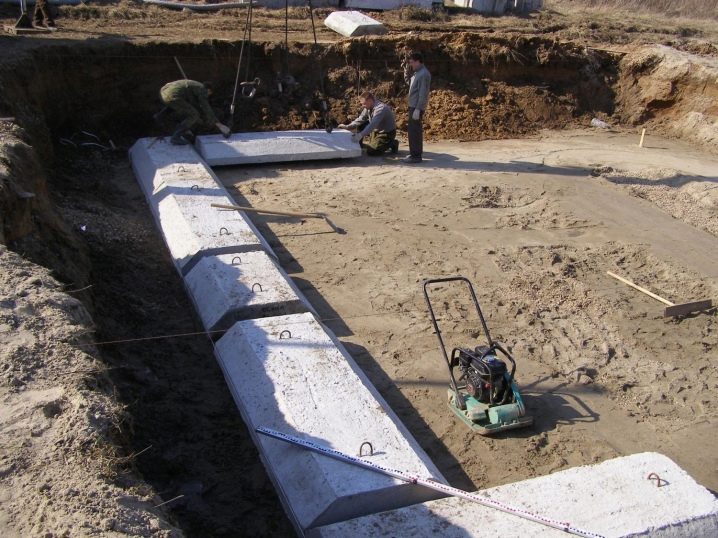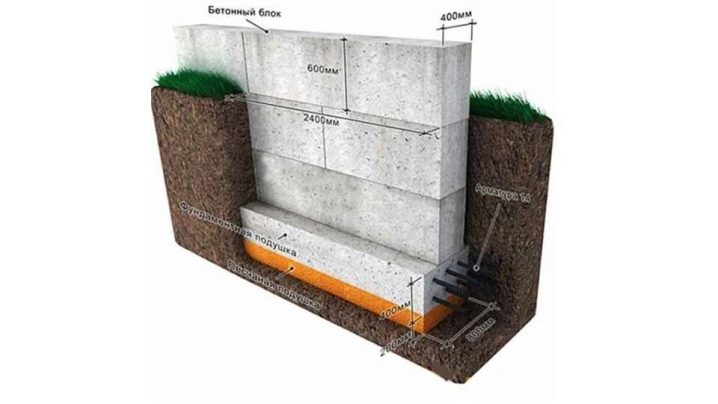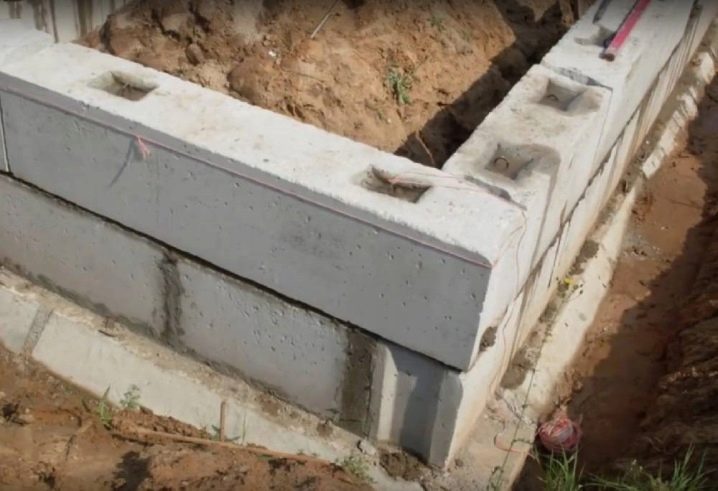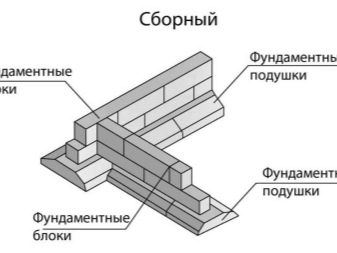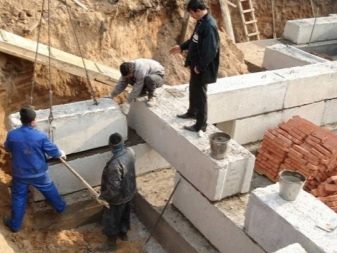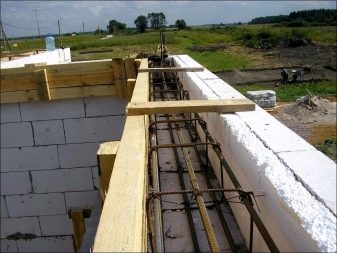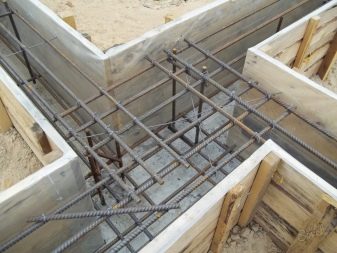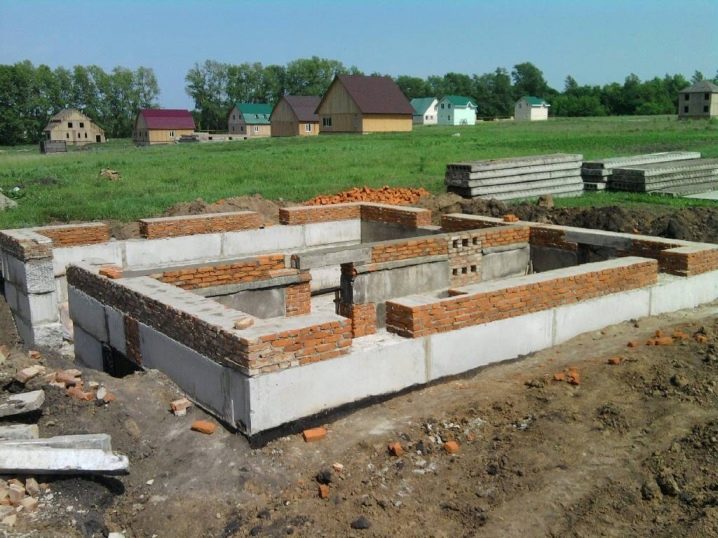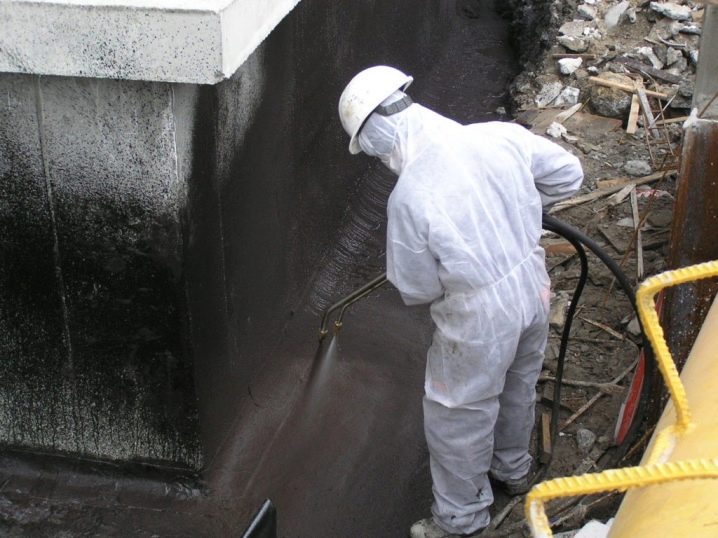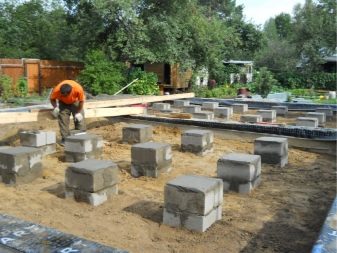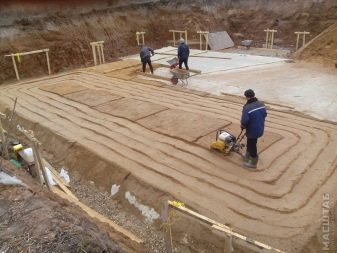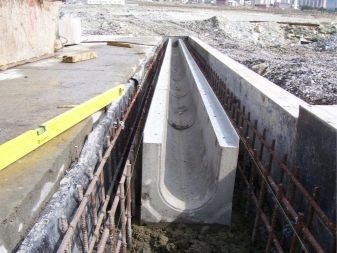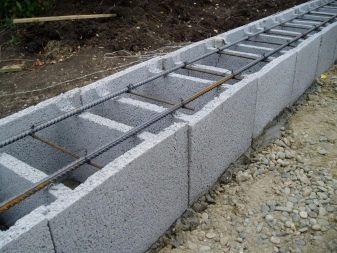Foundation blocks: types and characteristics, recommendations for installation
Any construction activities for the construction of buildings and structures begin with the preparation of the foundation. From its quality will depend on the reliability and durability of the entire building. The construction market offers a variety of materials for this crucial task. In order to get a good result in a short time without extra costs, additional training, without using formwork, experts suggest using foundation building blocks, abbreviated FBS.
What it is?
Foundation blocks contain concrete in their base. They are designed to speed up the process of laying the foundation.
FBS have a wide scope:
- construction of foundations for residential and industrial buildings;
- construction of basements and cellars;
- the construction of various supports, racks and bridges;
- construction of garages and basements;
- installation of barriers.
When using quality material, the foundation of the blocks will be durable and reliable.
Dimensions
The dimensions of the foundation blocks are regulated by GOST. As a rule, length, width and height are immediately indicated in the designation of a standard size.
Standard
Traditionally, shapes for FBS are rectangular parallelepipeds, however, you can order products of individual format.
On the sides, the blocks have end grooves that ensure good packing density.
The most common and popular model has the parameters 2400 x 400 x 600 mm. Moreover, the length is rounded up, since in fact the standard is 2380 mm.
In addition to these, the required foundation blocks with a length of 1180 and 880 mm. In this case, the width can be from 300 to 600 mm in increments of 100. The standard height, as a rule, is 580 mm (rounded up 600 mm).
Small-sized
According to GOST, blocks with small dimensions of 40 and 60 cm in length are also produced. Such FBS is used for non-standard constructions. For example, builders often use structures made of heavy concrete 200 x 200 x 400 mm (20 x 20 x 40 cm) for the construction of low-rise buildings,they can be laid manually without the use of special equipment. And also they will be indispensable for the construction of the foundation on sandy soil. Such a unit weighs on average about 31 kilograms.
And also small-sized products include blocks with parameters 600 x 600 x 600 and 400 x 400 x 200 mm. They are used as wall for the construction of basements and cellars, as well as in the construction of the column type of foundations.
When selecting parameters, it is necessary to focus on the type of soil. With a low degree of stability of the soil used more massive blocks. For example, FBS with a length of 2400 mm is laid on clay soil, and small-sized variants on sandy soil.
Standards
All technical characteristics of FBS are also regulated by GOST.
In addition to dimensions, the standard indicates the mass of the block. This indicator determines the density of concrete, as well as the weight, knowledge of which is necessary for loading, transportation and laying.
Dimensions and weight must be in accordance. Deviation is acceptable, but insignificant. So, the maximum permissible length deviation should not exceed 13 mm, width and height - 8 mm.
If the weight established by the standard for a particular model is significantly different from the original, then the block has unacceptable internal voids,which lowers its strength. Such models cannot be used for the construction of supporting structures.
It also indicates which building is suitable for the construction of a particular type. For example, using the knowledge of the standard, you can accurately calculate what the depth should be the foundation for a one-story house.
For the production of any type of foundation block, high-density concrete must be used.
His class determines the strength of PBS:
- T - heavy concrete, density about 2400 kg / cu. m;
- P - expanded clay concrete, density 1800 kg / cu. m;
- C - silicate concrete, density 2000 kg / cu. m
All manufacturers are required to indicate in the labeling. For example, if it specifies FBS-24-4-6 t, then a block with parameters 2380 x 400 x 580 is used, the production of which used heavy concrete.
In addition to standard parameters, GOST regulates such as frost resistance and thermal conductivity.
For those who are ignorant in the field of building materials, it is necessary to clarify that the higher the thermal conductivity coefficient, the less heat is retained. Such blocks require insulation.
Frost resistance indicator behaves the opposite. The greater the coefficient, the higher the resistance of the material to freezing.
Other parameters that are stipulated by GOST include fire resistance and water resistance.
Kinds
The classification of the foundation blocks depends on the causative factor.
By type of material
According to GOST, a structural type of raw material is used in the production of foundation blocks: several types of concrete mixes of increased density.
- Concrete, cement or reinforced concrete. For the strength of the last add crumb of granite or basalt. FBS, which are used in the production of heavy grades of concrete, have a maximum density. The main advantage of reinforced concrete is durability and strength of the whole structure.
- Silicate. Manufacturing technology is similar to the production of bricks. Some brands provide additives in the form of high-grade cement, but not more than 14 percent of the total. For strength, the solution is heated and then subjected to slow cooling. This procedure provides one hundred percent cure.
- Lightweight aggregate. The blocks containing in its composition expanded clay, have the allowed curing of 70 percent.Such products belong to the class of lightweight concrete materials and are used for manual laying.
- From foam concrete. It should be noted that there are many building materials that have similar production technology with FBS, but they can not be used for the construction of the foundation. For example, experts do not recommend the use of gas silicate products without external protection, since porous materials have the ability to vapor absorption. This process leads to cracking of concrete at low temperatures. Without waterproofing the foundation of foam concrete can be erected only for technical premises: sheds, garages. At the same time, the framework should not be deepened much.
- Earlier, cinder block was widely used throughout Soviet space. It was used in different qualities: for walls, for foundations. Its production was a side effect on all metallurgical productions, since blast furnace slag was used for its production. Now additives in slag stones can be different: sand, gravel, crushed stone, broken bricks or concrete building waste, perlite, sawdust. The technical characteristics of the product depend on the additives.As a rule, cinder blocks have an uneven unsightly surface, but are exceptionally cheap.
Silicate and expanded clay materials have increased adhesion, therefore, with their help, they construct structures of complex shapes.
To use them as foundation blocks, the initial mass is subjected to special treatment.
- Silicate solutions are saturated with additives from ground blast furnace slag, which causes an increase in waterproofing of the block.
- When forming, the procedure of vibrocompaction is used, in which they get rid of excess air inside the mixture, blocking access for the subsequent penetration of steam and water.
- Processing blocks with hydrophobic solutions. These are usually organosilicon preparations, characterized by a deep penetration rate.
By technology
Solid or full-bodied. This modification, in turn, is divided into reinforced versions and blocks without reinforcement.
Such modifications are intended for bearing structures.
- Since the foundation is under constant pressure on compression, full-bodied reinforced blocks are the most popular option for its construction.
- Hollow.As a formwork it is convenient to use hollow-core models of FBS. Armature is poured into existing holes and filled with concrete. And also similar products are used for the construction of lightweight types of foundations.
- With cutouts. Such blocks are often made to order for laying communications on a specific project. End grooves provide solid construction.
By type of surface
Foundation blocks can have either a surface that can not be covered with decorative materials, or trim.
No deep cracks are allowed on the block edges. The allowed parameters are 0.1 mm for heavy and silicate type concrete, 0.2 mm when used as part of expanded clay.
In form
FBS are available in two main formats.
- Plate. If the foundation is erected on weak ground, then special FBS, which are called “pillow”, are indispensable for the first row. These building products have a large area of one of the surfaces, which allows to increase the stability of the structure. Such plates officially carry the name "for the tape base" (FL). They are designed to ensure uniform shrinkage of the entire structure.
- Block. For all other types of soil suitable block type, dimensions may vary.
To destination
Manufacturers produce foundation blocks, different in their technical characteristics. They are not interchangeable, so you need to carefully approach their choice.
The following types can be distinguished:
- wall;
- foundation;
- socle.
By way of increasing strength
Foundation blocks are gaining strength in many ways.
- Drying The process consists in the natural drying and hardening of the concrete after molding. For this, the blocks are kept for several weeks in a ventilated room.
- Steaming. Unlike the first method, steaming takes less time, for example, a day, in order to achieve a standard hardness level of 70%. In this case, FBS is under the influence of high pressure at high humidity.
The quality of products is practically indistinguishable, but the cost of the second method is higher.
Manufacturers Overview
Any concrete plant in Russia has a line for the production of PBS. Unfortunately, not all of them produce quality products. Someone violates the technology, somewhere in the solution add concrete of different brands, decommissioned from other construction sites.
When choosing you need to proceed from the purpose of the planned building. If these are technical small-sized buildings, then you can save money by buying a cheap unit. But in the case of capital construction, especially residential, you should contact a reliable supplier specializing in the production of FBS.
Among domestic factories there are several.
JSC "Factory of industrial building parts". Production is located in the city of Surgut and is one of the largest in Russia. Concrete products are subject to strict quality control. The laboratory engaged in improving the quality characteristics is accredited by Gosstroy of the Russian Federation. All manufactured products are certified.
The main products are:
- road plates;
- several types of piles;
- well rings;
- foundation blocks.
LLC shopping center "Vira" in St. Petersburg produces more than 400 types of concrete finished products. The company produces construction products that can provide any type of construction from scratch. The company's regular customers are domestic enterprises of the Leningrad Region and the entire North-West region of the Russian Federation. Established partnerships with suppliers from near and far abroad.
For the production of used high grade concrete. All products have quality certificates and technical passports.
A developed logistics network allows the company to regulate prices, offering favorable conditions to regular customers. In addition, the plant provides advice on the selection, operation and makes the necessary calculations of consumables.
Main products:
- aerated concrete blocks;
- ceramic brick;
- roofing materials;
- a natural stone;
- siding;
- flexible stone;
- concrete products, including the foundation blocks.
The company offers solid foundation blocks for the construction of strip type foundations. Overall parameters are various: from 2400 x 500 x 600 to 380 x 190 x 190 mm. For their manufacture used heavy grade concrete.
Master LLC - a young fast-growing company from Voskresensk. The company produces a wide range of products for the construction segment, including foundation blocks.
- Large FBS length 2400 and a height of 600 mm. Width varies from 300 to 600 mm in increments of 100.
- FBS for walls and basements, for which the height remains unchanged 600 mm, the proposed lengths of 2400, 2200, 900, 800, 500 mm, modifications in width are similar to large-sized products.
- Plates for strip foundations are represented by a huge list of products.
- Base beams, differing from blocks of substantial length up to 6000 mm.
The company also produces floor slabs, staircases, reinforced concrete piles, power transmission pillars, columns, supports, fences and much more.
All products have the necessary supporting documentation. Master LLC is not only engaged in the production and delivery of goods to the customer, but also provides installation services.
LLC Aleksinsky Ceramsite Plant. The plant is located in the Tula region and has been operating since 1985. The main activity is the production of expanded clay and products made from it, including wall foundation blocks.
The undoubted advantages are the development of its own technologies, high professionalism of employees, multi-stage quality control.
Foundation claydite-concrete blocks have the following technical characteristics:
- strength grade of concrete - heavy;
- density of 2100-2300 kg per meter cubed;
- strength according to GOST M150-M200;
- filler - sand and gravel mixture;
- dimensions 390 x 190 x 188 mm;
- weight within 27-29 kilograms;
- does not conduct current;
- lack of radioactivity confirmed by a certificate;
- water absorption up to 7%.
LLC "Zlatoust plant"located in the Chelyabinsk region, produces a wide range of standard building materials. In addition, it takes individual orders.
The quality of products is carried out by our own accredited laboratory. The use of high-tech equipment and its own developments in the field of technology allow the company to improve the quality characteristics of its products.
All products comply with GOST, has supporting documentation in the form of certificates, licenses, warranties and technical passports.
The developed logistics network allows us to offer our customers favorable conditions.
Among the large number of products offered there are foundation blocks, both large-sized, 2400 mm long, and small-sized, 600 mm long.
Advantages and disadvantages
Like any building material, PBS has its own characteristic pros and cons.
Let's start with the merits.
- The shortened time of installation of the base.Bulk option reaches the required level of strength on average after 4 weeks.
- Ease of calculation due to standard dimensions.
- Reducing the cost of formwork and reinforcement.
- Possibility to choose base blocks with specified technical characteristics, for example, frost resistance or moisture resistance.
- Long operational life.
- Resistance to deformation.
- Wear resistance.
- Environmentally friendly in most cases.
- Corrosion Resistance.
- FBS are not subject to rotting.
- Uniform shrinkage and load distribution.
- The absence of marriage associated with a violation of the fill or reinforcement. Subject to the choice of quality certified unit.
- Exact geometric shape.
- Reducing the number of manual operations.
- Large assortment of sizes.
- Versatility. The same types can be used in private and industrial construction, for walls and for foundations.
- Works can be carried out year-round, regardless of weather conditions.
Disadvantages:
- unlike the bulk version, the foundation of building blocks has joints that need to be insulated;
- installation of the foundation using large-sized blocks will require the involvement of construction equipment for lifting and laying;
- not all types of foundations can be constructed using PBS, for example, for high-rise buildings;
- poor thermal conductivity requires insulation of the foundation of the blocks.
How to choose?
Before you buy the foundation blocks, you need to familiarize yourself with their technical characteristics and learn about the manufacturers who produce them in the region.
Need to focus on the following factors:
- climate of the region;
- soil type;
- the height and height of the building;
- the planned thickness of the walls and floors;
- total weight of the structure;
- base area.
Before purchasing, you must make the correct calculation of consumables: blocks and cement mortar. Many companies offer to do this as a bonus when buying.
For industrial construction use large-sized foundation blocks of concrete heavy brands.
For the construction of private buildings such as cottages or garages are used small-sized reinforced concrete blocks.
For the dacha, having a frame of light building materials: wood or foam blocks, it is inappropriate to spend money on a solid foundation, in this case, you can use light foundation blocks of silicate or expanded clay concrete. Lightweight FBS can be laid manually without the use of special equipment. Here blocks with parameters 20 x 20 x 40 cm will be appropriate.
For a gazebo or utility room, you can choose aerated concrete.
In addition, when choosing, you must pay attention to the manufacturer.
- It is better if the blocks are factory-made, since in this case they undergo multi-level quality control and comply with GOST.
- A reputable manufacturer will not only provide the entire package of documents, but also offer a guarantee or calculate the consumption of materials.
- For the construction of residential or large structures it is better to purchase blocks with a safety margin, for example, reinforced.
If the production technology is not violated, then FBS will last a long time (up to 50 years). The exception is blocks with the addition of blast furnace slag. These products are destroyed over time, not strengthened, since slag decomposes over time. Therefore, acquiring PBS of this type is possible only for temporary or technical buildings.
An important characteristic when choosing is the geometric form of FBS. Ideal geometry will optimize cement mortar consumption and finishing costs. And also it will improve the quality of the connecting joints. The best indicators in this regard are in ceramoblocks and foam concrete.
If we consider all the characteristics in the aggregate, then the most profitable in terms of price - quality are keramsit concrete products and foam concrete. At a relatively low cost, they have high coefficients of frost resistance, excellent energy-saving properties, good strength.
The most eloquent factor in choosing are the reviews of those who have already used the specified material, but within reason.
Work with material
The technology of working with foundation blocks is similar to the method of laying bricks or cinder blocks. The only difference is size and speed. Installation of structures using FBS is faster, so they prefer to use for the construction of industrial facilities.
Features of working with foam blocks
A characteristic feature of foam concrete products is low rigidity. The foam variation, in contrast to the monolithic one, is characterized by increased elasticity and is subject to shrinkage.Foam concrete blocks are inappropriate as the foundation in cases with a heavy frame of the structure itself. Under load, they shrink significantly, which can cause the walls to arch.
Experts advise in this case to use steel reinforcement for the redistribution of the load.
Project
Any construction begins with a project that contains all the information about the construction. It includes drawings of each floor and foundation, communication schemes, calculation of material consumption and much more.
Based on this, you can decide on the type of foundation blocks and calculate their number.
Foundation drawings should contain information about the presence of basements, basement or lack thereof. Ways of laying of the base depend on it.
Based on the project, you can order individual units with a pattern of holes for communication.
Preparation of laying foundation blocks includes several operations.
Markup
Design layout will help make the foundation layout. To do this, in the corners of the site, which is determined by the building, pegs are driven in. Between them, the rope is stretched and in addition install an intermediate marking of the walls.
Foundation pit
You can lay out any foundation with your own hands, but for this you need to correctly prepare the pit, focusing on the type of soil.
The depth of the pit under the usual foundation, as a rule, is equal to the depth of soil freezing plus 20 centimeters. But this rule is feasible only for a temperate climate. In cold regions, the value of freezing is much higher. Digging is so deeply labor-intensive and expensive, so in this case we limited ourselves to a depth of 1-1.5 meters.
The dimensions of the pit, if you plan a deep foundation, should be wider, better by 1 - 1.5 meters. This distance is necessary to carry out work on the hydro and thermal insulation.
If the base silicate blocks deepen by 50-60 cm, and the estimated construction height of 2 - 3 block rows, then you can not expand the working area.
Sole
For the arrangement of the foundation used in two ways.
- On a sandy pillow. Previously, in the dug trench, the bottom is leveled, clay and peat are removed. Next, the coarse gravel is poured and carefully tamped, gradually adding fine fraction of gravel and sand. The next step lay out the drainage flooring and geotextiles.
- On a concrete base. After tamping the soil going formwork of the boards around the perimeter of the foundation.Next fit fittings. For its manufacture using steel rods with a diameter of from 12 to 14 mm. They are tied with metal wire in a grid with cells of 10 or 15 cm. Depending on the height of the structure and its dimensions, the reinforcing layers can be from two or more. After preparation, the base is poured with concrete. Fill should be done slowly and evenly, expelling excess air. The surface is aligned with the rule. The base pillow should dry and gain strength only after 3 - 4 weeks. In hot weather it is necessary to moisten it with water to avoid cracking.
Other
In order to move around the base perimeter, even in bad weather, you should take care of wooden flooring.
Piling
The next step is laying the foundation blocks. Laying FBS need to carefully and customized individually.
Soil effect
Laying the foundation with the help of FBS is possible on all types of soil.
If the soil coating is weak, viscous, crumbling, then it is necessary to reinforce the supporting structure with reinforcing belts every two rows.
For sustainable soil types, the installation of a discontinuous foundation is shown, in which the blocks should be laid at intervals of not more than 70 cm. The voids are filled with earth and properly tamped.This option is less expensive. High-rise buildings erected on such a foundation is prohibited.
On weak types of soil, it is better to lay out the first row with blocks-pillows.
Instead of bury foundation blocks in the ground, you can assemble a columnar version of the blocks. This design is suitable for buildings of lightweight concrete or wood concrete slabs. To make the ground floor, combine foam blocks and piles.
First row
The reliability, durability and geometric accuracy of the building depends largely on whether the installation of the first row of the FBS is done correctly.
More often, the initial preparation consists of leveling the horizon, that is, the installation of FL-type slabs is planned to increase the footprint and uniform shrinkage of the heavy foundation.
Laying the first row begins with the corners, after which they conduct a control measurement of the height of the building level or level. Then the cord is tensioned between the corner blocks to facilitate laying out the intermediate parts. Foundation blocks are attached using cement mortar. It is better to fit FBS to each other with a rubber mallet.
When the solution is set, reinforcement is carried out, if necessary.
Further installation is recommended only after some time, when the cement is completely hardened. If you start to lay out the following rows earlier, then there is a big risk of deformation of the initial row.
Installation of foundation blocks
When building industrial buildings or structures, large blocks are used, for which a construction crane is required.
For small-sized construction special equipment is not required, because you can handle on their own.
Laying begins in the same way as the first row: from the corners. Then the intermediate blocks are mounted. Cement mortar is used for fastening, and vertical joint joints are filled with it.
Installation technology is similar to brickwork. The seams of the previous and next rows should not be the same. Geometry must be monitored continuously, using a level for this purpose. It is important that the foundation has the correct shape.
Waterproofing
Foundation blocks, especially porous, must be treated with hydrophobic solutions. Most often, experts cover all the laying of liquid mastic. She needs to miss the mark not only outsidebut also the internal surfaces of the foundation.
If the climate in the region is wet, then you need to take care of additional waterproofing. Ruberoid is used for this.
Armored belt
Some experts recommend reinforcing the upper foundation row. This is especially true in those areas where the soil is unstable, which causes the "circulation" of the soil.
Reinforced concrete belt is designed to strengthen the base structure. Floor slabs are laid on it.
Before pouring, wooden formwork is installed along the entire perimeter. For reliability, boards are fastened with wire. Steel reinforcement with a section of 10 mm is laid inside the box. Then the whole structure is poured with concrete.
Construction can be continued after the complete hardening of the armored belt.
Useful tips
- At the design stage, it is necessary to obtain the conclusion of the geodesic company about the features of the soil on the site. This is necessary to resolve the issue of the possibility of using foundation blocks for construction, as well as the choice of methods for laying the foundation. In addition, this report indicates the depth of groundwater, which is also necessary for the construction of the foundation.
- For housing, it is better to choose prefabricated units, since such products are under the control of experts.
- The worse the carrying capacity of the soil, the overall dimensions should be FBS.
- According to the recommendations of the builders, the foundation should be located below the level of soil freezing.
- Melkofraktsionny expanded clay in the composition of the foundation blocks will provide the correct geometric shape, as well as allow you to evenly distribute heat.
- For prefabricated foundations it is better to use reinforced concrete FBS.
- It is better not to buy handicraft production units for the construction of residential buildings, since the violation of technology during production can lead to the destruction of the entire building.
- The greater the length of the block, the smaller the joints, then more reliable.
- Reinforced concrete blocks have a safety margin of up to 70 percent, which eliminates cracks.
- Treat base silicate blocks with hydrophobic substances after laying. If you do this earlier, the laying strength will be affected, since the binder solution will not be absorbed well.
For waterproofing the foundation of the best liquid mastic or bitumen.
However, experts use other methods:
- ruberoid pasting;
- dyeing with special paint based on acrylic, silicone or polyurethane;
- plastering polymer compositions;
- hydrophobic additives that are added to concrete, making the entire unit hydraulically stable;
- spraying a thin rubber layer.
Laying out the column foundation with the help of FBS is easier and cheaper than the tape one. But keep in mind that it is not suitable for the construction of a two-story house. This option is more appropriate for the construction of greenhouses, gazebos and light frame houses.
Wall blocks can be used as foundation only in buildings with low load.
It is necessary to thoroughly tamp the base cushion under the foundation, constantly wetting it, which will prevent the structure from “walking”.
When calculating the consumption of materials it is necessary to consider the weight of the structure. To do this, remember that the volume of concrete of different models may be different depending on the density.
Making the calculation, it is also necessary to lay the acquisition of several blocks with cutouts for laying communications. Otherwise, you will have to drill holes in the purchased FBS.
If you want to build a strip foundation for the fence, then to save, it is recommended to use the blocks that were in use. The main thing is that they do not have chips and significant cracks. It is estimated that cost reduction in this case will be from 30 to 50 percent. FBS, second-hand, are suitable also for arbors, small greenhouses and temporary technical constructions.
All about block foundation and the intricacies of construction, see in this video.
